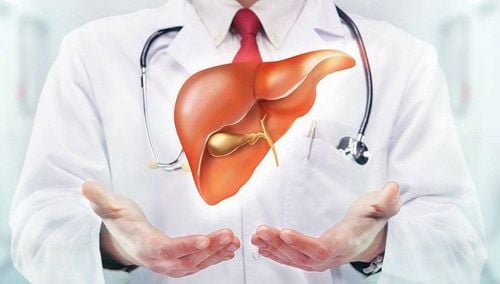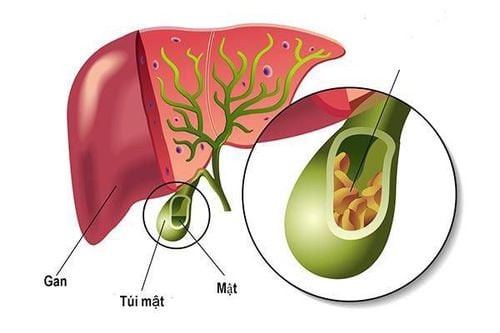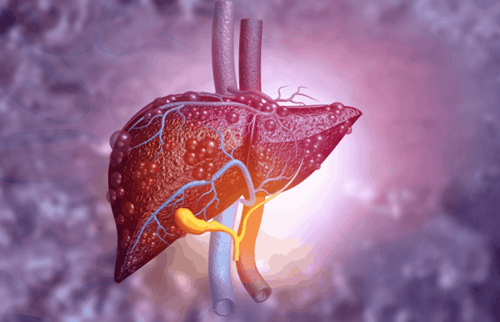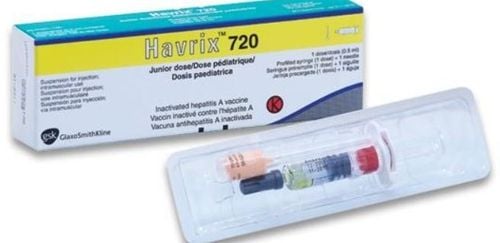This is an automatically translated article.
The article was professionally consulted by Specialist Doctor I Vo Thi Thuy Trang - Department of Medical Examination & Internal Medicine - Vinmec Da Nang International General HospitalLiver exams and liver function tests are needed to diagnose and monitor liver disease or damage. These results are normal or abnormal does not always negate liver disease or confirm liver disease but requires analysis by your doctor. Since then, monitoring liver health is essential in comprehensive health care, especially in subjects at high risk of liver disease.
1. Why is a liver examination necessary?
The liver examination and liver function tests are intended to:When the patient has any unusual symptoms that suggest liver dysfunction, including: fatigue or loss of energy, weight loss, yellowing of the skin and eyes, ascites, dark urine or pale stools, nausea or vomiting, persistent diarrhea, abdominal pain, bruising or unusual bleeding.
Check for infections in the liver, such as viral hepatitis, which are very common in adults
Monitor the progression of liver diseases, such as viral or alcoholic hepatitis, and confirm determine how well a treatment is working
Measure the severity of the disease causing permanent liver damage, especially cirrhosis
Watch for possible side effects of the medication, especially when Treatment with drugs that can damage the liver
Have risk factors for liver disease such as heavy drinking, being overweight or obese, having diabetes and high blood pressure
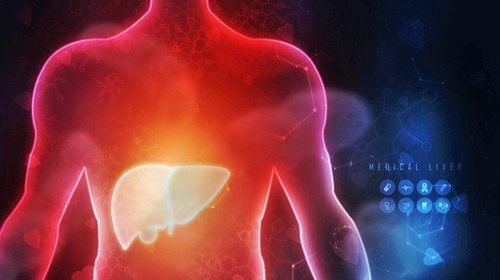
Khám gan và xét nghiệm chức năng gan là những việc cần làm để chẩn đoán và theo dõi bệnh hoặc tổn thương gan
2. What is a liver exam and liver function tests?
At the initial stage, the liver may have been damaged by diseases but the patient has not shown any symptoms. Therefore, the assessment of the health status of the liver at this time is mainly based on blood tests and liver imaging, most commonly through ultrasound of liver structure, ultrasound measurement of liver tissue elasticity.When liver diseases are more advanced, patients not only have specific symptoms due to impaired liver function, but when examining the liver, the liver will be larger, palpable under the right lower quadrant, pressing on the tension. immediate pain. In contrast, in cirrhotic patients, the liver will be rough, rough in surface and a palpable liver tumor if present.
Liver function tests are done to check the levels of certain enzymes and proteins in the blood that are made by the liver. Higher or lower than normal levels may indicate liver problems. Some common liver function tests include:
Alanin transaminase (ALT): ALT is a relatively specific enzyme found in the liver that helps convert protein into energy for liver cells. When the liver is damaged, ALT is released into the bloodstream and levels rise.
Aspartate transaminase (AST): Similar to ALT, this is also an enzyme that works in the liver to help metabolize amino acids, so it is usually present in the blood at low levels. However, AST is not as highly specific for liver tissue as ALT. Accordingly, an increase in AST levels may not only indicate liver damage but also in muscle lesions.
Alkaline phosphatase (ALP): ALP is an enzyme found in the liver and bones that is important for breaking down proteins. A higher-than-normal ALP level may indicate liver damage, especially from causes leading to blocked bile ducts or certain bone diseases.
Albumin and total protein: Albumin is one of several proteins made in the liver. The body needs these proteins to fight infections and perform other functions. Lower-than-normal levels of albumin and total protein may indicate liver damage or serious medical conditions.
Bilirubin: Bilirubin is a substance produced during the normal breakdown of red blood cells. Bilirubin passes through the liver and will be excreted mainly in the feces, partly in the urine, giving it a characteristic yellow color. High levels of condensate bilirubin in the blood can cause jaundice, yellowing of the eyes, or into the brain causing kernicterus in infants which may indicate ongoing liver damage.
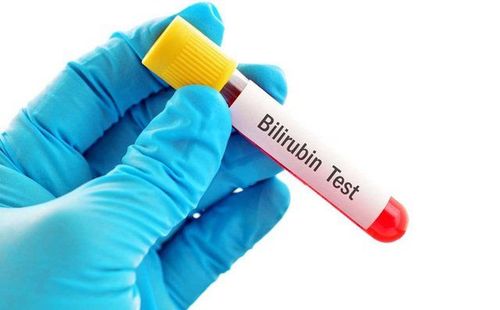
Nồng độ cao của bilirubin bị ứng đọng trong máu sẽ gây vàng da, vàng mắt hay vào não gây ra vàng da nhân ở trẻ sơ sinh có thể cho thấy tổn thương gan đang diễn tiến
L-lactate dehydrogenase (LDH): LDH is an enzyme found in the liver. Elevated levels of LDH may also indicate liver damage but are not specific as they can also be elevated in many other disorders.
Prothrombin time (PT): PT is the time it takes for the blood to clot. Increased PT may indicate liver damage, due to a lack of components involved in coagulation reactions produced by the liver. However, PT can also be increased if the person is taking certain blood-thinning medications, such as warfarin.
The most commonly used imaging modality for morphological and structural investigations of the liver is ultrasound. By emitting ultrasound waves and receiving echoes, images of the liver and structures deep within this solid organ are displayed on a computer screen. From there, the doctor will identify the causes of liver damage such as stones, liver tumors or classify the stage of liver fibrosis.
Other liver disease tests will also be performed depending on the situation, such as immunological tests for hepatitis viruses, liver cancer markers or congenital liver metabolic disorders such as liver failure. copper stasis, iron stasis...
3. Results in liver function tests
The patient's blood will be sent to a laboratory for analysis according to the doctor's orders for evaluation of liver function tests. Normal blood test results for typical liver function tests include:ALT: 7 to 55 units per liter of blood (U/L) AST: 8 to 48 U/L ALP: 40 to 129 U /L Albumin: 3.5 to 5.0 grams per deciliter of blood (g/dL) Total protein: 6.3 to 7.9 g/dL Bilirubin: 0.1 to 1.2 milligrams per deciliter (mg/ dL) GGT: 8 to 61 U/L LDH: 122 to 222 U/L PT Time: 9.4 to 12.5 s These results are typical for adult males. Normal results vary between laboratories and may be slightly different for women and children.
Your doctor will use these results, in combination with your clinical signs and risk factors for liver disease, to help diagnose your liver condition and determine treatment if needed. Then, the time to re-examine will depend on the progression of the disease, after 2 weeks or 4-6 weeks or 3-6 months. If the patient has acute liver injury or complications of liver disease, hospitalization may be required for monitoring.

Bác sĩ sẽ kết hợp kết quả xét nghiệm và khám lâm sàng để chẩn đoán tình trạng gan của người bệnh
In short, because the liver is an essential organ to digest food and remove toxins from the body. Any damage to the liver can eventually lead to liver failure, a life-threatening condition. This is why liver exams are part of routine health care. At the same time, how often to have a liver exam will depend on each individual's condition, the doctor will decide this helps to monitor liver function more complete and closely.
Please dial HOTLINE for more information or register for an appointment HERE. Download MyVinmec app to make appointments faster and to manage your bookings easily.




